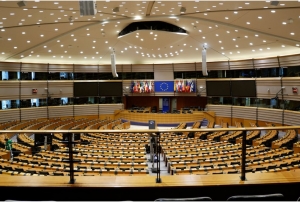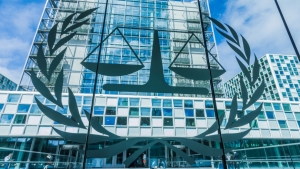Cultural heritage is often seen as a way to build bridges in a divided society in the aftermath of a conflict. As stated by Professor Lucas Lixinski in the first sentence of the book Legalized Identities: Cultural Heritage Law and the Shaping of Transitional Justice, “during transition, cultural heritage can be used to create, resurrect, and preserve certain narratives about the past that significantly impact national cultural identity and the overall possible directions of the transitional process” (p. 1). By critically analyzing the intersection between cultural heritage and transitional justice, this book intends to fill the gap in legal literature on the subject.
The manuscript is divided into seven chapters covering a broad scope of themes concerning the intersection between transitional justice and cultural heritage: the relationship between identity, memory, and transitional justice in legal literature (chapter 2); the tension between conservation and “reinventation” of historical monuments, and how symbols can acquire new meanings (chapter 3); conflicts surrounding demands of the population to erase or replace symbols embodied in cultural and historical monuments (chapter 4); analyses of new symbols created – such as human rights museum and archives – by transitional justice (chapter 5); and potential solutions for the tensions between cultural heritage and transitional justice (chapter 6). The book highlights several difficulties ensuing from the instrumentalization of cultural heritage in transitional justice by examining an array of cases in which this occurred in different States and different types of conflict.
One interesting point made by Professor Lixinski concerns the instrumentalization of cultural heritage in the transitional process. Cultural heritage is used strategically in these cases to either promote dialogue between different groups in a broken society or help further invisibilize a part of society. For instance, the simple inclusion of a monument on the World Heritage List can hide part of the history, culture, or relevance of a specific cultural heritage by stating only a side of the history concerning the cultural heritage and, thus, prioritizing the views, or the ‘truth’ of a specific group, which can further enhance social conflicts. The book brings several examples in which cultural heritage was used as an attempt, successful or not, to capture the different contexts surrounding it, and therefore contributed to or aggravated the transitional process towards peace in the aftermath of a conflict.
Moreover, several caveat must be made when dealing with cultural heritage in a conflicted society. The meaning and relevance of a specific piece of cultural heritage can evolve as the interactions between individuals within a society change. A cultural monument that in the past proudly represented a part of a country’s or a community’s history can today symbolize a shameful, immoral, and even illegal past. From this, Professor Lixinski infers that the preservation of cultural heritage must be considered not only from the perspective of the community that produced this heritage or inherited it, but also all communities that are affected by it. Due to the plurality of interests that a specific cultural heritage can gather, its management can be challenging.
Cultural heritage is not only material or intangible; rather, all cultural heritage has a tangible—as simple as it can be—and an intangible aspect. New significations or traditions can be incorporated into existing cultural heritage, changing this heritage’s significance. Thus, even the outstanding universal value that qualifies a piece as cultural heritage protected by the international community can evolve over time. This can be created artificially—by building a new monument, for example—or organically – by gradually changing its use in a specific cultural tradition. This process of adaptation that cultural heritage can go through adds another layer of complexity to its instrumentalization.
In this sense Professor Lixinski’s proposal to engage in a pragmatic approach — “to think beyond technique, principled solutions, and insulation [in order to understand that] justice is possible only when it responds to specific contexts, when it engages the communities on the ground, and when it is driven by actual experience” (p. 192) — seems appropriate to address the different tensions highlighted throughout the manuscript. Each society, each culture, each conflict has its own particularities that play a central role in how we can instrumentalize cultural heritage in a path towards a more harmonious future.
Although the book discusses the above questions in depth, it does not deal with an important issue that has recently drawn the attention of legal scholars: the question of how to make reparations for crimes against cultural heritage. As highlighted by the Draft Policy on Cultural Heritage published by the Office of the Prosecutor of the International Criminal Court (ICC) on March 23rd, 2021, cultural heritage can be affected in the event of a war crime, crime against humanity, genocide, and crime of aggression. Since transitional justice can also include the prosecution of those who perpetrated international crimes or grave violations of human rights or international humanitarian law, the reparation for such crimes is also contentious issue in the relationship between cultural heritage and transitional justice. The reparation of the damage—tangible or intangible—done to cultural heritage can also impact the creation and consolidation of a peaceful society after the conflict; this reparation, as stated in the Al Mahdi case, should also be transformative, in a manner that can help transform the structural causes of conflict. Nevertheless, the reparation for such crimes must also be dealt with extreme care, as reparation policies cannot be used for political purposes in order to hide or erase the culture or history of a community. In this sense, other questions that can also affect the transitional process can be raised, such as the impact of having foreign actors financing the reparation and the inference of international actors in the application of the reparation for cultural heritage crimes, since, as recognized by the ICC, the international community is also a victim of this kind of crime and is therefore entitled to reparation for the harm suffered.
In summary, the book Legalized Identities: Cultural Heritage Law and the Shaping of Transitional Justice by Professor Lucas Lixinski addresses fundamental questions related to the role of cultural heritage in transitional justice. By analyzing several case studies, the book highlights the challenges and advantages of instrumentalizing cultural heritage in the process of building a peaceful society after a conflict. Moreover, it proposes a new manner to think the use of memory and cultural heritage in this context. It is an important and comprehensive piece of legal literature on the subject.





